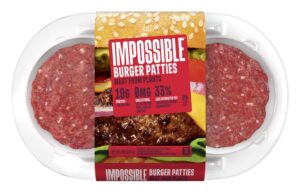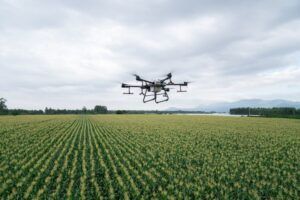While the nascent cultivated meat industry is undoubtedly in a downcycle right now, one leading academic in the field says he has “zero worries” about the long-term commercial viability of the technology.
Speaking to AgFunderNews after announcing “unprecedented” funding to hire five new faculty members to work on cultivated meat at a time when funding to startups in the space has sharply deteriorated, Tufts University Center for Cellular Agriculture (TUCCA) director Dr. David Kaplan said he remained optimistic about the long-term prospects for the industry.
“What we’re seeing is a normal contraction and rebirth that has to happen in any new industry or technology,” said Kaplan, a professor of biomedical engineering who launched the cell ag center at Tufts in 2020 and secured a $10 million grant from USDA in 2021 to establish the National Institute for Cellular Agriculture within Tufts University.
“I think consolidation from the early-stage companies is normal and then things will start growing again. It’s going to be cyclical.
“But I’m hoping this will spur the [US] government to use more public funding as you’re seeing in other countries where food security is critical,” added Kaplan, who said Tufts is working with eight other academic institutions around the US along with industry partners such as Cargill, Thermo Fisher, Vow and UPSIDE Foods on pre-competitive research. “You also see the Bezos fund now starting to write large checks so I think that’s a good sign as well.”
Asked whether he is confident that cultivated meat can be commercially viable at scale, he said: “I have zero worries there. What I don’t know is the timing because it depends on infrastructure development for scaling. But I’m very optimistic.”
From metabolic flux to membranes
The five new faculty positions at Tufts will span multiple areas, said Kaplan. “For example in the chemical engineering area we’re looking at something called metabolic flux, meaning if you feed cells to grow proteins, how does the energy you put in get apportioned towards the protein product versus waste products to other things? How do you model all that and optimize the process? That’s important for bringing down costs and increasing yields.
“We’re also looking at how do you design membranes to collect the wastewater from these processes and efficiently remove, recycle, or reuse components that are expensive? Others work on life cycle analyses, so looking at cost of goods, feed streams, raw ingredients, and energy.”
Cells: ‘There are a lot more tools in the toolkit now’
Asked about the technical challenges facing cultivated meat companies, he added: “If you had asked me three years ago [about some of the biggest challenges facing the sector] I would have put cells available cell lines at the top of the list, but I don’t see that as a problem anymore. You can find lots of cell lines from our lab and other labs. So for example we’ve generated immortalized bovine satellite muscle cells, adipose-derived cells from pigs, we’ve got fish cells of all kinds.
“There are also a lot more tools in the toolkit now and people know how to isolate and immortalize cells. We share all our cells and other labs do too, so it’s actually pretty easy to get different cells now although there is still some way to go on species such as lobster, shrimp, crab, clams, and oysters.”
Self-priming cells…
As for the cost of media, he said: “If you look back at Dr. Mark Post when he unveiled his hamburger just over 10 years ago, it was $300,000 to make a single quarter pounder. Today, most companies say they could do this for $10 a pound right? And even if they’re over-enthusiastic, let’s say it’s $20 a pound, we’re still orders of magnitude ahead of where we were 10 years ago, and the track is continuing along that road, so I don’t think cost of media is going to be an issue. It’s been shown that you can get good cell growth without bovine serum and you can replace albumin with inexpensive plant protein extracts.
“If you look at growth factors [pricey proteins used in cell culture media], up until around three years ago, people were using them because they thought they needed to, but in fact, were mostly overdosing. Now we only use what we need. We’ve also recently published on what we call self-priming [bovine muscle] cells [that have been modified to produce their own fibroblast growth factor].”
While cells that produce their own growth factors grow more slowly, he acknowledged, there are “many ways to deal with this,” said Kaplan. “It’s not a showstopper. You can reengineer the cells further to overcome this, plus they [the cells] don’t have to produce growth factors all the time. You can use small molecules, temperature, or other tools to turn promotors on and off and have gene expression up- or down-regulated.”
What companies such as Prolific Machines are doing by harnessing light-sensitive proteins to control cells is also “very novel and exciting,” he added.
Stir tank bioreactors used in pharma ‘just too expensive’
With all that said, he added, “Right now, no one is scaled to where we need to go. The infrastructure doesn’t exist yet. So that’s going to take time. When it comes to bioreactors I don’t think there’s going to be one solution, we need lots of innovation. But the one thing I will say though, is that I don’t think stir tank reactors that have been used in pharma are going to work here. They’re just too expensive.”
He added: “The larger you go with bioreactors, the more you’re worried about contamination, but then there are technologies to address that. We can’t live in the past with pharma-based solutions.”
According to preliminary AgFunder data, investment in cultivated meat companies fell 37% to $52.8m in the first half of 2024 vs $83.3m in the first half of 2023, with the bulk of the capital going to Mosa Meat, which announced a $43 million raise in April.


















Guest article: To reduce methane’s impact across agrifood systems, we must measure it properly